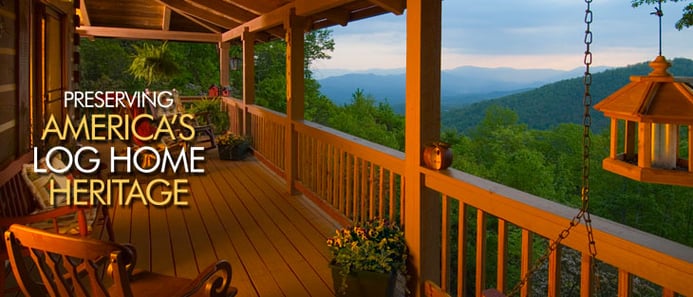
March’s Log and Timber Home Show in Sevierville was about turning log home dreams into reality. Visitors browsed exhibits from 80 vendors, including over 30 log and timber home builders. “This year we are hoping to help restore dreams to the Gatlinburg community,” says show manager Eric Johnson.
Appalachian Log Structures Regional Sales Manager Donald Parsons understands those dreams. From cabin rentals to private homes, the Smoky Mountain region is synonymous with log structures. "For many [tourists], staying in a log cabin has been a dream of theirs for years,” Parsons says. Families whose homes were destroyed know just how special a log home is too. “It’s hard to describe what it’s like to live in a log home … there’s nothing else like it and that’s why we want to help folks get back into theirs.”
Read on to see what we learned at the Log and Timber Home Show and what you might have missed.
9 Questions You Didn’t Know You Had about Building a Log Home
Home show visitors often ask about cost per square foot, wood species, log dryness and building timelines. While these questions are important, Parsons also likes to speak to customers about questions they hadn't considered. Categories and questions include:
Invest in quality materials and methods
- Are kiln-dried logs dry enough? Wood may change in moisture content and dimension while awaiting shipment, during fabrication, in transit and in storage. What’s more, kiln-dried logs will continue to dry until they reach an equilibrium moisture content with the surrounding atmosphere.
Interestingly, professional log home builders are not concerned with how dry the logs are. They want to know how the building system accommodates the movement in the wood as it continues to reach equilibrium moisture content over a newly-completed home's first few heating seasons. - How are preservatives applied? Kiln drying sanitizes logs, but doesn't prevent insect re-infestation. The industry standard preservative is sodium borate, applied by brush, dip tank or pressure treatment to different effect. Keep in mind that dip, brush and spray-on methods are merely surface treatments. Only pressure treating will penetrate the sap wood completely, offering superior protection against decay and wood-digesting insects.
- What type of fastening system should you use? As they dry, logs compress and walls settle. Fasteners affect how much walls twist or shift. One example is the thru-bolt, which keeps the log stack compressed during settling. Other methods include log home screws, spikes, lag screws, drift pins and wooden dowels.
- Which components are pre-cut and which are random length? Pre-cut systems save time and labor by reducing cuts made on the job site. Find out which parts of your home package are pre-cut and which aren’t. Pre-cut window and door openings, interlocking corners and ship-lap wall joints mean faster, tighter and more energy-efficient log stacking.
Understand how times have changed in home construction
- If you’re rebuilding, have codes changed? “The days of taking a sketch of a home to the building department and getting a building permit are past,” Parsons says. Be sure your builder is familiar with local building codes and knows what documentation is required for permits.
- Does your lender require a general contractor? Construction loans can be complicated and have risks, as this Money Crashers article explains.
Look for integrity
We covered ways to protect yourself when selecting contractors in a previous post, but what else should you ask?
- Does your log home manufacturer belong to the Log and Timber Council and does your builder belong to the local home builders’ association? These organizations hold members to high standards of construction quality and ethics. Check the Log and Timber Council’s membership directory and your area home builders’ association online.
- What does the warranty cover? Warranties range from a few years to a “lifetime” so ask exactly what's covered. Lifetime warranties usually apply to manufacturing defects and seldom address structural failure caused by rot, decay and wood-digesting insects. The Appalachian Log Structures warranty covers these items that others don’t.
- What is required to maintain the warranty? You may have to use a certified contractor or periodically reapply sealants or preservatives to the logs. Knowing your responsibilities is crucial to the warranty agreement.
So - when attending a show like the Log and Timber Home Show, Donald and the Appalachian Log Structures team like to get attendees thinking. You might just leave the show with more than you bargained for - and that's a good thing!




.png?width=137&height=70&name=blue-seal-120-61-bbb-21001218%20(1).png)